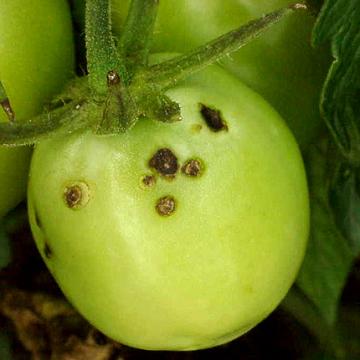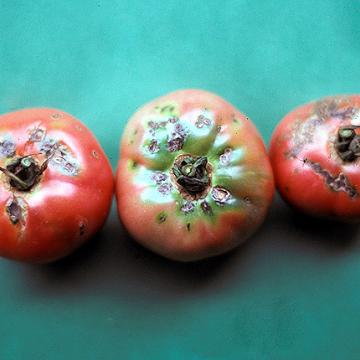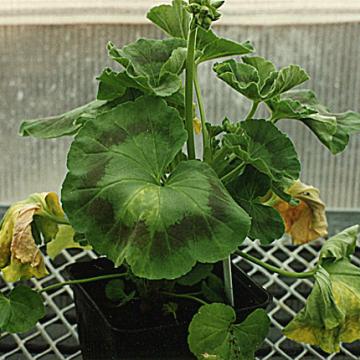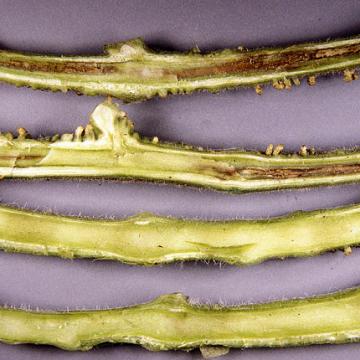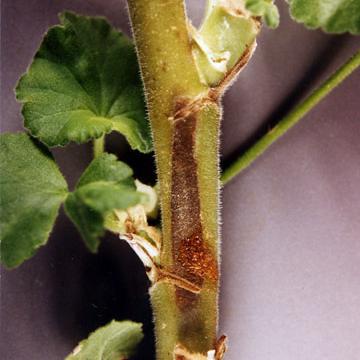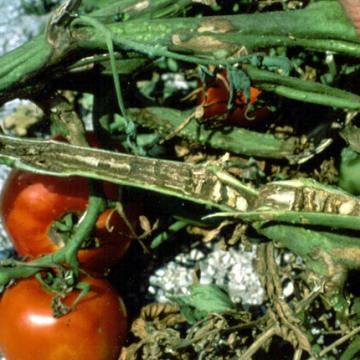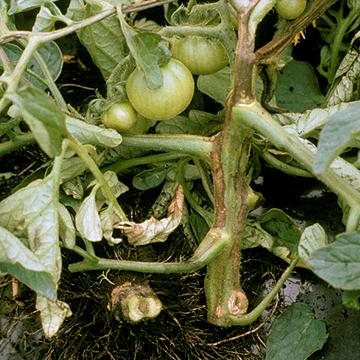DISEASE: Bacterial spot
HOST: Tomato
Green fruit with dark brown lesions. The bacterial spot xanthomonads are Xanthomonas euvesicatoria, X. vesicatoria, X. perforans, and X. gardneri. X. perforans is not known to infect fruit.
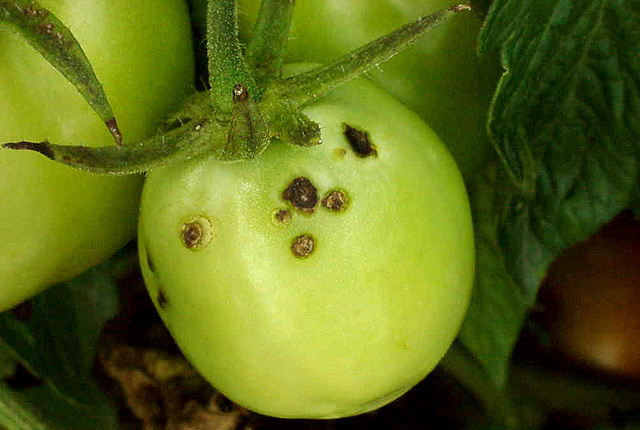
Bacterial spot | Tomato
DISEASE: Bacterial spot
HOST: Tomato (Lycopersicon esculentum)
PATHOGEN: Xanthomonas bacterial spot pathogens
PATHOGEN SYNONYM: Xanthomonas axonopodis pv. vesicatoria
SOURCE: S. Miller
DISEASE: Bacterial spot
HOST: Tomato
Ripe fruit with dark brown spots. The bacterial spot xanthomonads are Xanthomonas euvesicatoria, X. vesicatoria, X. perforans, and X. gardneri. X. perforans is not known to infect fruit.
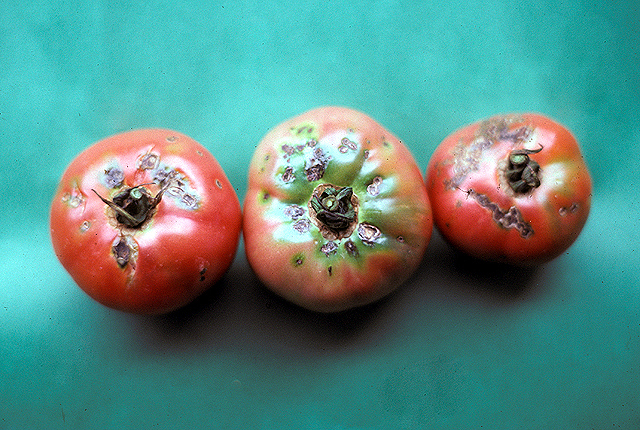
Bacterial spot | Tomato
DISEASE: Bacterial spot
HOST: Tomato (Lycopersicon esculentum)
PATHOGEN: Xanthomonas bacterial spot pathogens
PATHOGEN SYNONYM: Xanthomonas axonopodis pv. vesicatoria
SOURCE: M. Goto
DISEASE: Pith necrosis
HOST: Geranium
Geranium with wilted, yellow necrotic leaves.
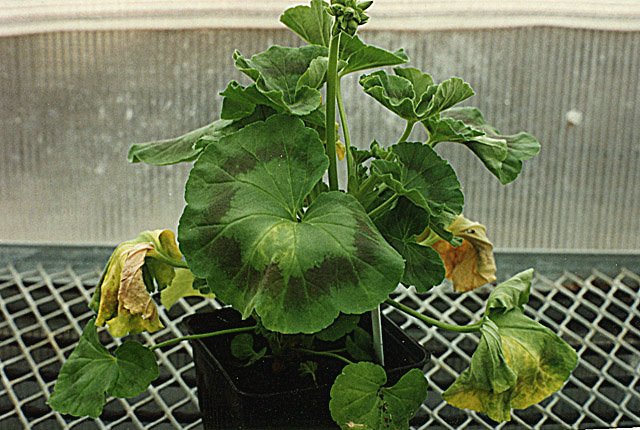
Pith necrosis | Geranium
DISEASE: Pith necrosis
HOST: Geranium (Pelargonium sp.)
PATHOGEN: Pseudomonas corrugata
SOURCE: A. Magyarosy, D. Thomas
DISEASE: Pith necrosis
HOST: Geranium
Pitted and hollow stems, one of the disease symptoms.
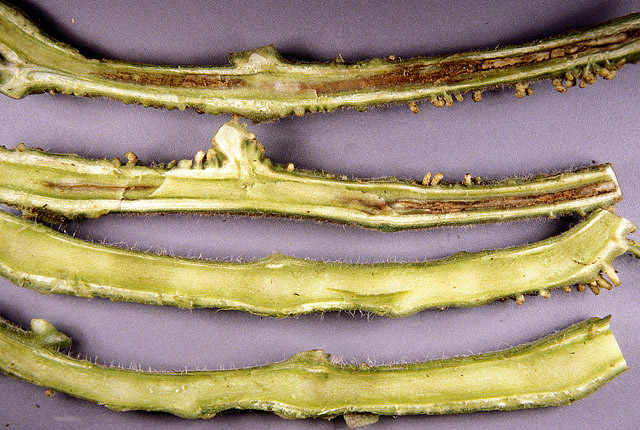
Pith necrosis | Geranium
DISEASE: Pith necrosis
HOST: Geranium (Pelargonium sp.)
PATHOGEN: Pseudomonas corrugata
SOURCE: A. Magyarosy, D. Thomas
DISEASE: Pith necrosis
HOST: Geranium
Discolored stem caused by systemic infection of the pathogen.
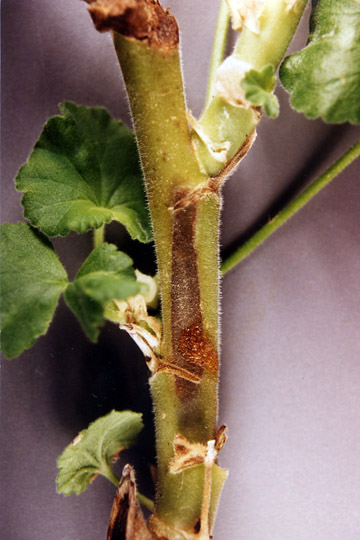
Pith necrosis | Geranium
DISEASE: Pith necrosis
HOST: Geranium (Pelargonium sp.)
PATHOGEN: Pseudomonas corrugata
SOURCE: A. Magyarosy, D. Thomas
DISEASE: Pith necrosis
HOST: Tomato
Cracked, dry, hollow stems with internal necrosis.
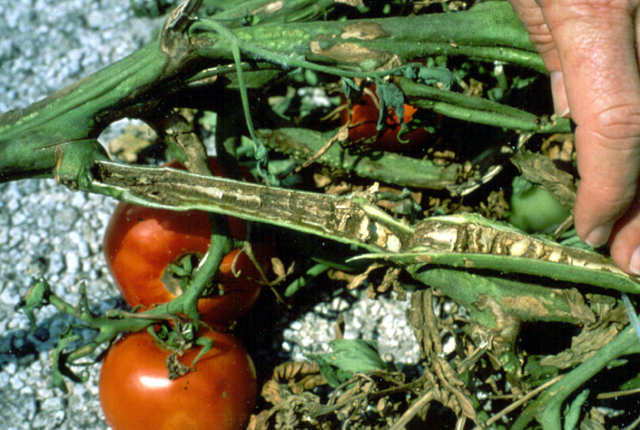
Pith necrosis | Tomato
DISEASE: Pith necrosis
HOST: Tomato (Lycopersicon esculentum)
PATHOGEN: Pseudomonas corrugata
SOURCE: A. Alvarez
DISEASE: Pith necrosis
HOST: Tomato
External necrotic stem tissues. Initial symptoms include chlorosis of young leaves. Wilting may occur when disease is severe.
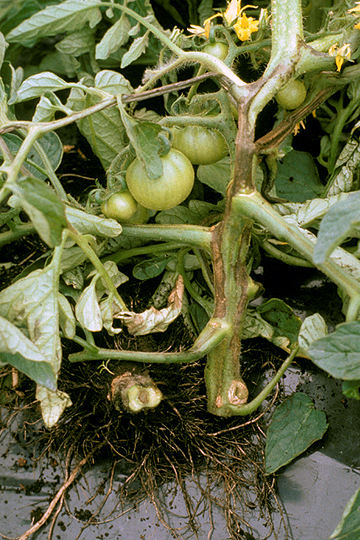
Pith necrosis | Tomato
DISEASE: Pith necrosis
HOST: Tomato (Lycopersicon esculentum)
PATHOGEN: Pseudomonas corrugata
SOURCE: K. Natsuaki, M. Goto


